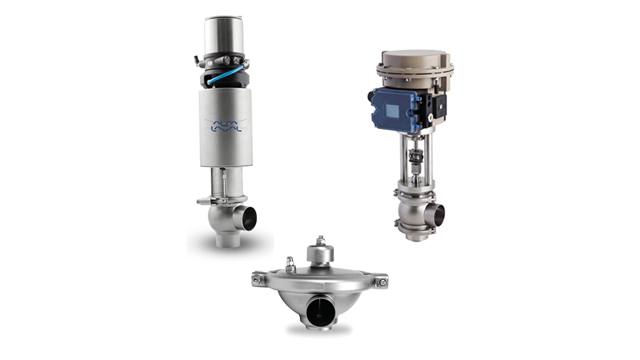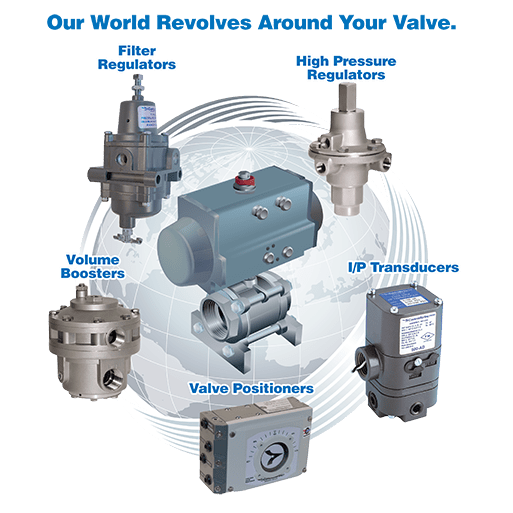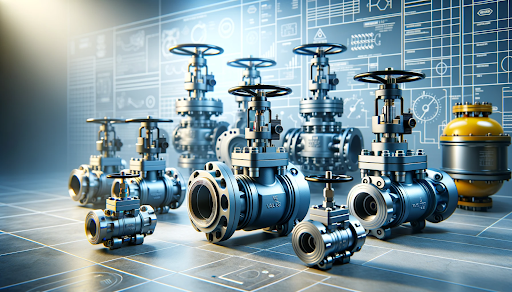Recognizing the Value of Control Valves in Process Automation
Recognizing the Value of Control Valves in Process Automation
Blog Article

Maximize Power Cost Savings and Comfort With Advanced Building Automation Controls
In the realm of modern-day style and center administration, the assimilation of innovative structure automation regulates stands as a crucial improvement. By harnessing the power of automation, structures can adapt, react, and evolve in methods that were once unthinkable.
Power Efficiency Perks
Power performance benefits can significantly minimize power intake and functional prices in structures. By executing energy-efficient techniques and modern technologies, structure proprietors and drivers can attain significant savings while also adding to environmental sustainability. One of the key benefits of enhancing power performance in structures is the reduction of utility expenses. Energy-efficient systems, such as innovative structure automation controls, can enhance using resources like lighting, heating, and cooling, bring about reduced energy expenditures over time.
In addition, improved power efficiency can extend the life expectancy of building tools and systems. By operating a lot more successfully, a/c systems, lighting fixtures, and various other structure elements experience much less damage, causing lowered upkeep and substitute costs. Furthermore, energy-efficient buildings usually command higher home values and rental prices, giving long-lasting monetary benefits to proprietors.
Additionally, energy performance can enhance passenger comfort and efficiency. Correctly controlled indoor atmospheres with optimal lights and thermal conditions develop a more positive and conducive office, resulting in boosted worker fulfillment and performance. Generally, the power efficiency advantages related to sophisticated structure automation controls are multifaceted, encompassing cost savings, ecological stewardship, and resident health.
Boosted Convenience Control
Enhancing convenience control in structure settings calls for an innovative assimilation of innovative automation systems for ideal passenger health. By using innovative building automation controls, centers can customize the interior atmosphere to satisfy the certain demands and choices of owners. control valves.
Enhanced comfort control surpasses fundamental temperature level adjustments. It consists of functions such as individualized settings, tenancy sensors, and all-natural light use to create a vibrant and responsive setting. By integrating these advanced controls, structures can not only boost comfort but additionally boost energy performance by maximizing system operations based upon real occupancy and use patterns. Eventually, focusing on passenger comfort with advanced automation systems brings about a more delightful and healthier interior environment.
Functional Efficiency Improvements

Moreover, the implementation of real-time surveillance and analytics devices makes it possible for building drivers to determine energy inefficiencies and functional abnormalities immediately. By continually monitoring power use patterns and system performance metrics, changes can be made in real-time to maximize power consumption and ensure peak functional effectiveness. control valves. Furthermore, incorporating need reaction techniques into building Discover More automation controls can even more enhance functional effectiveness by dynamically adjusting energy usage based on grid problems and prices signals
Indoor Climate Optimization
Reliable indoor environment optimization is a fundamental element of building automation controls, guaranteeing owners' comfort and well-being while optimizing power cost savings. By making use of sophisticated sensors and controls, constructing automation systems can constantly monitor and adjust temperature level, moisture levels, air high quality, and ventilation to create an optimal interior setting. Keeping consistent and comfy problems not just improves passenger complete satisfaction yet also improves efficiency and general well-being.
Indoor environment optimization likewise plays a critical duty in energy efficiency. By fine-tuning ventilation, air conditioning, and home heating systems based on real-time information and occupancy patterns, developing automation controls can dramatically minimize energy usage - control valves. As an example, carrying out techniques such as demand-controlled ventilation and thermal zoning can aid lessen power waste while ensuring that each area of the structure receives the required conditioning.

Sustainable Atmosphere Development
Structure automation controls my sources not only enhance interior climate problems for power efficiency and occupant convenience yet likewise lay the foundation for creating a lasting setting with calculated administration of resources and systems. By incorporating innovative structure automation modern technologies, such as sensing units, actuators, and smart software application, centers can adjust and keep track of power use in real-time to decrease waste and lower their carbon footprint. These systems enable predictive maintenance, determining possible issues before they intensify and maximizing tools performance to enhance durability and effectiveness.
In addition, lasting setting creation expands past power monitoring to incorporate water conservation, waste decrease, and interior air quality enhancement. Structure automation controls can regulate water usage, identify leakages, and ensure proper waste disposal techniques, adding to overall sustainability efforts. Additionally, by managing and keeping track of air flow and filtration systems, these technologies boost occupant health and efficiency while decreasing power consumption connected with HVAC operations.
Verdict
Finally, advanced structure automation regulates offer considerable advantages in terms of energy financial savings, convenience control, operational effectiveness, indoor climate optimization, and developing a sustainable environment. By executing these controls, buildings can achieve ideal performance while minimizing power intake and improving resident comfort. It is apparent that using innovative automation innovation is critical in boosting structure performance and creating a much more sustainable future.
Energy effectiveness advantages can considerably reduce energy intake and operational expenses in structures. On the whole, the power efficiency benefits connected with innovative building automation controls are diverse, encompassing expense savings, ecological stewardship, and passenger well-being.
Furthermore, incorporating demand reaction strategies right into building automation controls can better boost functional performance by visit here dynamically readjusting energy use based on grid conditions and rates signals.
Structure automation regulates not just optimize interior climate conditions for power performance and resident convenience however also lay the foundation for producing a lasting environment via strategic management of sources and systems.In verdict, progressed building automation controls offer significant benefits in terms of power financial savings, convenience control, functional effectiveness, interior environment optimization, and producing a lasting setting.
Report this page